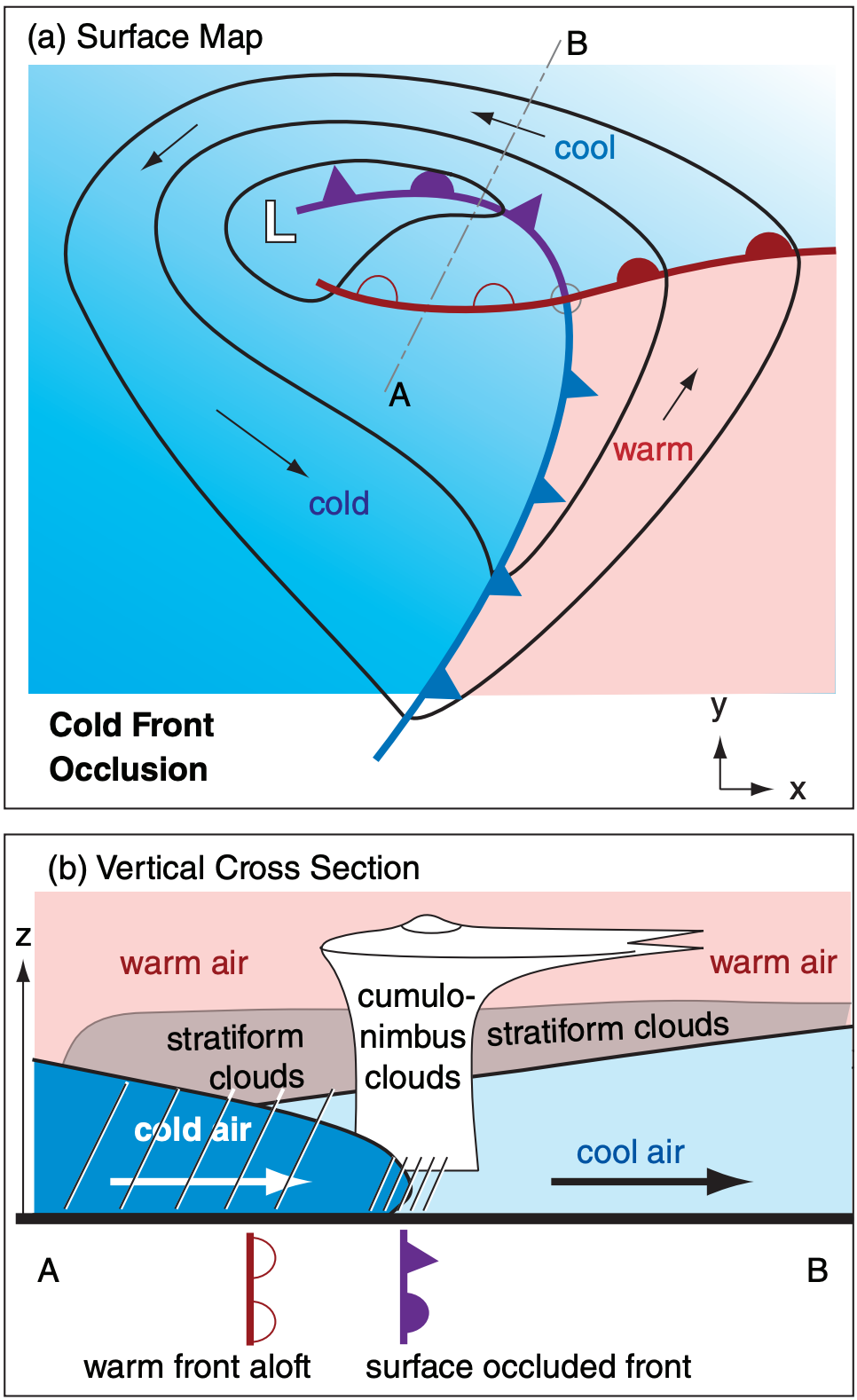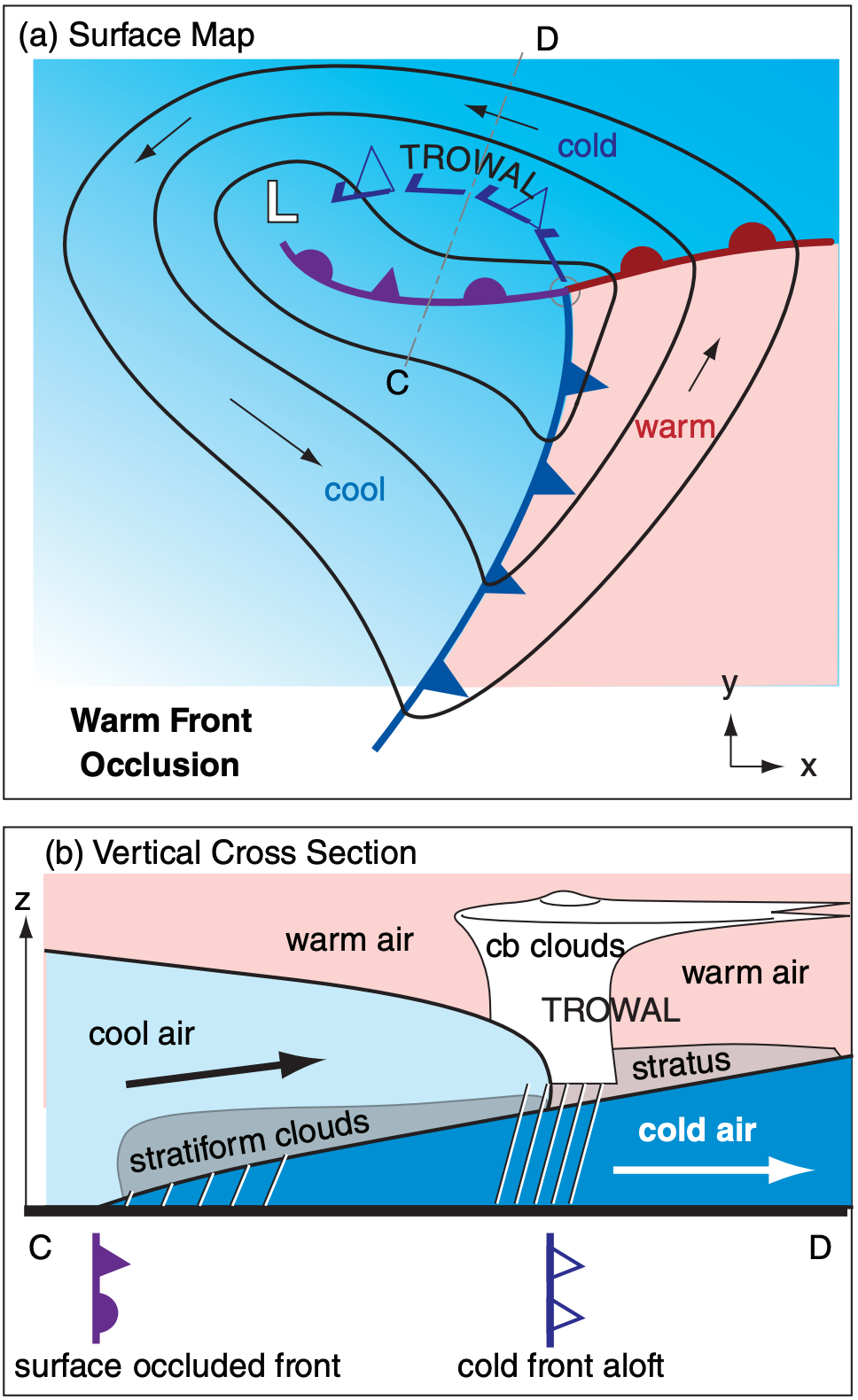12.6: Occluded Fronts and Midtropospheric Fronts
- Page ID
- 9608
When three or more airmasses come together, such as in an occluded front, it is possible for one or more fronts to ride over the top of a colder airmass. This creates lower- or mid-tropospheric fronts that do not touch the surface, and which would not be signaled by temperature changes and wind shifts at the surface. However, such fronts aloft can trigger clouds and precipitation observed at the surface.
Occluded fronts occur when cold fronts catch up to warm fronts. What happens depends on the temperature and static-stability difference between the cold advancing air behind the cold front and the cold retreating air ahead of the warm front.


Fig. 12.30 shows a cold front occlusion, where very cold air that is very statically stable catches up to, and under-rides, cooler air that is less statically stable. The warm air that was initially between these two cold airmasses is forced aloft. Most occlusions in interior N. America are of this type, due to the very cold air that advances from Canada in winter.
Observers at the surface would notice stratiform clouds in advance of the front, which would normally signal an approaching warm front. However, instead of a surface warm front, a surface occluded front passes, and the surface temperature decreases like a cold front. The trailing edge of cool air aloft marks the warm front aloft.
The location in Figs. 12.30 and 12.31 where the cold, warm, and occluded fronts intersect at the surface is called the triple point.
Fig. 12.31 shows a warm front occlusion, where cool air that is less statically stable catches up to, and over-rides, colder air that is more statically stable, forcing aloft the warm air that was inbetween. Most occlusions in Europe and the Pacific Northwest USA are this type, due to mild cool air that advances from over the cool ocean during winter.
Observers at the surface notice stratiform clouds in advance of the front. But before the surface front arrives, there can be showers or thunderstorms associated with the cool front aloft. Later, a surface occluded front passes with widespread drizzle, and the surface temperature warms.

Fig. 12.32 shows how the static stability relates to the type of occlusion. In this sketch of a warm front occlusion, look at the static stability across the occluded front, at the altitude of the dashed line. To the east of the front in the cold airmass, the air is strongly stable (as shown by the tight packing of the isentropes in the vertical). To the west in the cool airmass, the air is less statically stable (i.e., greater vertical spacing between isentropes). If this had been a cold frontal occlusion instead, the greatest static stability would have been west of the front.
The wedge of warm air (Fig. 12.32) pushed up between the cool and cold airmasses is called a TROWAL, an acronym that means “trough of warm air aloft.” This TROWAL, labeled in Fig. 12.31a, touches the ground at the triple point, but tilts toward higher altitudes further north. Under the TROWAL can be significant precipitation and severe weather at the surface (Fig. 12.31b) — hence it is important for weather forecasting.
The previous sketches are “text-book” examples of prototypical situations. In real life, more complex maps and cross sections can occur. Sometimes more than three airmasses can be drawn together in a low, causing multiple cold or warm fronts, and multiple fronts aloft.


